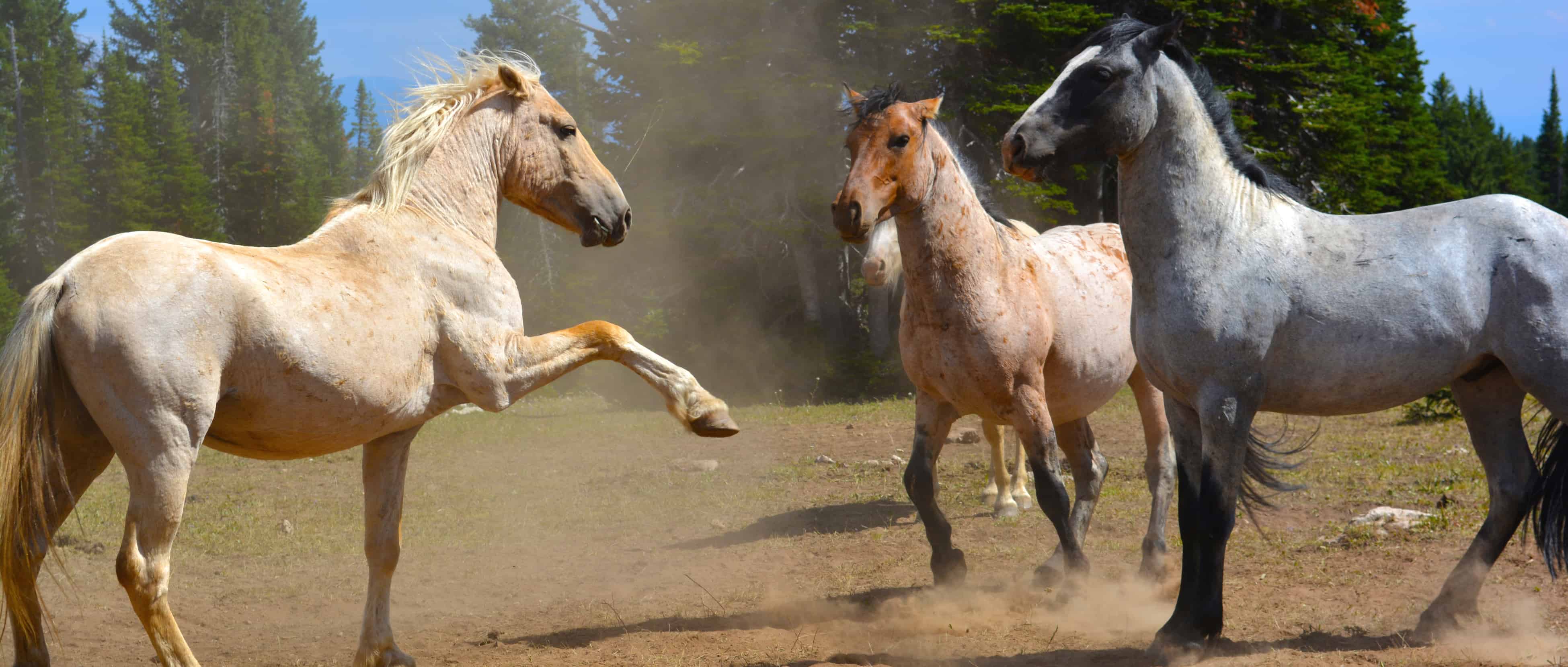Share this article
Budget hearing: Wild horses and burros a priority for BLM
As the appropriations season for fiscal year (FY) 2017 ramps up in Washington, Congressional subcommittees in both the House and Senate are holding hearings to discuss and dissect the President’s budget request. Every year the President submits a budget request to Congress outlining the federal government’s funding needs for the upcoming FY, which starts on Oct 1. Congress must then approve this budget through 12 separate appropriations bills, each developed by a specific appropriations subcommittee.
On March 3, 2016, the House Appropriations Subcommittee on Interior, Environment, and Related Agencies held a hearing to discuss the President’s funding requests for the Bureau of Land Management in FY 2017. During the hearing, BLM Director Neil Kornze fielded questions that focused almost entirely on wild horse and burro management, with a handful of queries related to sage-grouse (Centrocercus urophasianus) conservation plan developments.
Wild Horses and Burros
When it comes to BLM’s budget planning, wild horse and burro populations have taken the reins. Kornze reminded the Subcommittee of a few key facts: Wild horse and burro herds grow by nearly 20 percent every year; there are more than twice as many horses on BLM-managed rangeland as is recommended for a healthy balance; over the last 10 years, adoption rates for wild horses and burros have dropped by nearly 70 percent; and each animal removed from the range and cared for by the agency costs taxpayer nearly $50,000 over its lifetime.
Kornze expressed to the Subcommittee that dramatic increases in the number of horses and burros in federal holding facilities have become a fiscal drain on the agency, eating away at the budget for other BLM programs. As the wild horse and burro budget has nearly doubled in the past 12 years, the BLM has also cut 12 percent of its staff positions, according to Kornze. .
“Put simply, the costs of this program are substantial and unsustainable,” Kornze said in his statement.
When questioned on how BLM will proceed, Kornze said, “I think there are some opportunities to be creative,” by establishing tax credits to incentivize adoption, for example. Additionally, new language in the President’s budget request would streamline the process of transferring work animals to other government agencies, like the U.S. Border Patrol.
Kornze explained that the current law technically precludes agencies from adopting wild horses and burros. As a workaround, individuals working within these other agencies – as opposed to the agency itself – adopt the horses. However, BLM must then spend resources performing compliance checks rather than leaving that task to the judgement of the agency that cares for the horse. When Representative Steve Israel (D-NY) raised concerns that this proposed change might be a slippery slope to the slaughterhouse for horses, Kornze expressed willingness to modify the proposal to safeguard against that possibility.
Subcommittee Chairman Ken Calvert (R-CA) admitted the value of transferring and adopting out horses, “but right now,” he said, “we need to stop the number of horses that are being born on the range.” In his statement, Kornze specified that “BLM will continue working with leading university and U.S. Geological Survey scientists to better refine its population growth suppression methods,” emphasizing agency collaboration.
Kornze stressed that fertility control technology must be advanced in order to be an effective management solution. As it stands, BLM utilizes a fertility control drug that lasts for only one year, which can be pragmatically problematic – especially since animals can be difficult to recapture. While Kornze indicated that they would like to see a drug that lasts for five years, or is permanent, the BLM is currently working on developing spay and neuter methods to address present need.
As chair of the National Horse and Burro Rangeland Management Coalition, TWS Government Affairs & Partnerships team has been working closely with issues concerning the relationship between wild horses and burros and rangeland health. TWS’ policy is to emphasize the needs of native plants and wildlife, and recognize the uncertainty and logistical challenges of fertility control methods.
Sage-Grouse
The President’s budget request for FY 2017 includes a dramatic increase in programmatic funding for sage-grouse protection, with a $14.2 million requested increase within Wildlife Management, and a $5 million requested increase to support implementation of the National Seed Strategy. This would bring the total BLM budget for sage-grouse habitat protection and restoration to a total of $79.2 million.
Questions directed at Kornze concerning sage-grouse were largely logistical – Appropriations Subcommittee members wanted to know how sage-grouse protections affect grazing and landowners. Kornze told the Subcommittee that the BLM would be holding workshops in Western States to discuss exactly how grazing permitting works in light of sage-grouse focal area conservation. He emphasized that permitting standards have not changed, but priority would be given to processing permit requests within focal areas.
Additionally, Subcommittee members asked how focal areas are determined, mapped, and disseminated. Kornze explained that the BLM uses best available science in its mapping, and that they are currently working with States to establish current sage-grouse range. He also highlighted collaboration with the Western Governors Association sage-grouse task force.
Header Image: ©Steve Hillebrand, U.S. Fish and Wildlife Service








